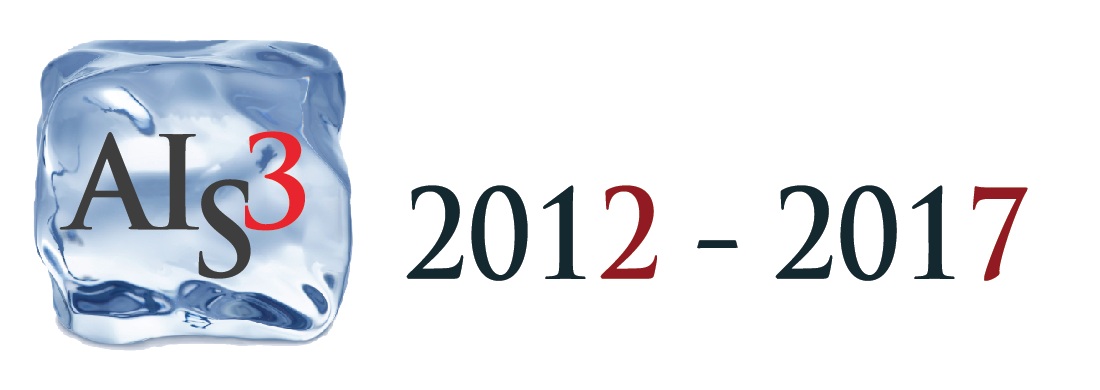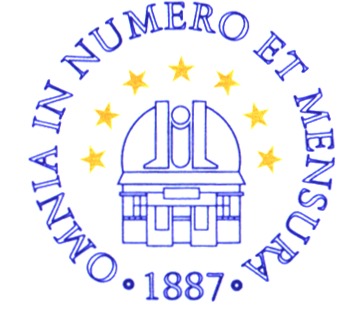Program of the Workshop
09:30 - 10:00 -- Registration
10:00 - 10:20 -- Welcome by Prof. Dr. Sanja Vraneš, Director of the Pupin Institute,
speech by Academician Dr. Zoran Knežević, Serbian Academy of Sciences and Arts,
speech by the Counselor of the Italian Embassy, Mr. Sergio Monti
10:20 - 10:40 -- Ceremony of signing of the agreement of cooperation between ICRAnet and the University of Belgrade.
Brief speeches by Prof. Dr. Vladimir Bumbaširević, Rector of the Belgrade University and Prof. Dr. Remo Ruffini, Director of ICRAnet.
10:40 - 11:00 -- Coffee break
11:00 - 11:15 -- Academician Dr. Zoran Knežević: Astronomical Observatory of Belgrade: brief history
11:15 - 11:45 -- Prof. Dr. Remo Ruffini, Director of ICRAnet (Pescara): Specific examples of separatrix between the collapsar and the BdHN models of GRBs
11:45 - 12:00 -- Dr. Srdjan Samurović: The BELISSIMA project / the "Milanković" telescope
12:00 - 12:15 -- Dr. Oliver Vince: Astronomical Station Vidojevica: observational projects I
12:15 - 12:30 -- Dr. Goran Damljanović: Astronomical Station Vidojevica: observational projects II
12:30 - 13:00 -- Dr. Emilio Molinari, Director of TNG (Telescopio Nazionale Galileo): Time Domain Astronomy, a new opportunity for Trans-National Astronomers
13:00 - 15:00 -- Lunch break
15:00 - 15:30 -- Prof. Dr. Giuseppe Longo, Univ. Napoli Federico II: Big Data in Astrophysics: challenges and perspectives
15:30 - 16:00 -- Prof. Dr. Salvatore Capozziello, Univ. Napoli Federico II: Addressing the missing matter problem in galaxies through a new fundamental gravitational radius
16:00 - 16:20 -- Dr. Vladan Čelebonović (Institute of Physics): Materials for asteroid science
16:20 - 18:00 -- Theoretical / computational projects and Discussion
18:00 -- Closing of the Workshop
ABSTRACTS
MOLINARI:
I present here TNG and REM, two Italian observational facilities which are offered to the international community via the OPTICON Trans National Access TNA) program. Both telescopes are suitable for the growing field of time domain astronomy, as survey or follow up facilities. Exoplanets are the main focus of TNG (3.6m in the Canary Islands), with its high rank HARPS-N and GIANO-B instrument, high resolution spectrographs for the visible and near infrared. TNG is still offering a more classical instrument suite with imager+spectrographs DOLORES and NICS, for visible and infrared light. REM is a robotic small telescope (0.6m) and its rapidity is fit for rapid follow-up of transients phenomena. It is located in the Chilean Andes and can observe in 5 filter at the same time, 4 in the visible (Sloan like) and une in the infrared (J, H or K'). The OPTICON TNA allows European researchers to apply for observing time, and also pays for travel expenses. It is also a natural start place for future collaborations.
LONGO:
Modern astrophysics and observational cosmology face the challenges posed by an overabundance of complex, accurate data which cannot be analysed with traditional software tools and call for a wide adoption of innovative methods based on machine learning. The talk will summarise the current status of the newly born field of astroinformatics, emphasing existing and future sinergies among European Countries.
RUFFINI:
In 100s: a supernova (SN) hypercritically accretes at a rate ~1 Msun/s on a tightly bound binary neutron star (NS) companion; the NS, reaching critical mass, gravitationally collapse to a Black Hole (BH) emitting a Gamma Ray Burst (GRB); the GRB impacts on the SN ejecta, it originates an X-ray Flare and transforms the SN in a hypernova. This cosmic matrix, named Binary-driven-hypernova (BdHN), is the most energetic of seven GRB subclasses. The BdHN model will be compared and contrasted with the "collapsar" model, with specific examples. We recall that essential has been the observational effort in the X and g rays, with space missions (e.g. BeppoSAX, SWIFT, FERMI) with vigorous European presence and with the European ESO VLT and the US KECK optical observatories. Equally crucial has been ICRANet theoretical effort in attributing the astrophysical meaning to the observed photons in likely the most complex model of physics and astronomy. We recall the development of the field, by one of us (R. Ruffini): from "introducing the Black hole" with J. A. Wheeler to the discovery of the first BH with R. Giacconi, to the first announcement of the GRB discovery with H. Gursky. We turn then to the developments in the recent years of the BdHN model with J. Rueda and C. Fryer. We plan to extend the technical and conceptual progresses in BdHNe to all GRBs and indicate some new specific examples, including the possibility of GRBs at z ~ 10. We plan to extend the results to the study of active galactic nuclei and to "multi messenger" activities including dark matter, neutrinos and gravitational waves.
CAPOZZIELLO:
We demonstrate that the existence of a Noether symmetry in extended theories of gravity gives rise to a further gravitational radius, besides the standard Schwarzschild one, determining the dynamics at galactic scales. By this feature, it is possible to explain the baryonic Tully-Fisher relation, the rotation curve of gas-rich galaxies, and the features of fundamental plane of ellipticals without the dark matter hypothesis.
ČELEBONOVIĆ:
The NeoDyS-2 data base at http://newton.dm.unipi.it/neodys/index.php?pc=0 contains at present data on 16739 objects. A number of them have small non zero probabilities of impacting the Earth. It would be interesting and important to predict at least some consequences of such events. They depend on several factors: the kinetic energy of impact, the composition of the impactor and the composition of the target at the impact site. As a consequence, it should become possible to determine the binding energies of the materials of the impactor and the target, which would ultimately determine the size of the crater originating in the impact. These problems are on the border of astronomy and solid state physics and could be the basis of joint work of researchers in both fields from Serbia and Italy. Some details on the possible collaboration will be given at the meeting.


